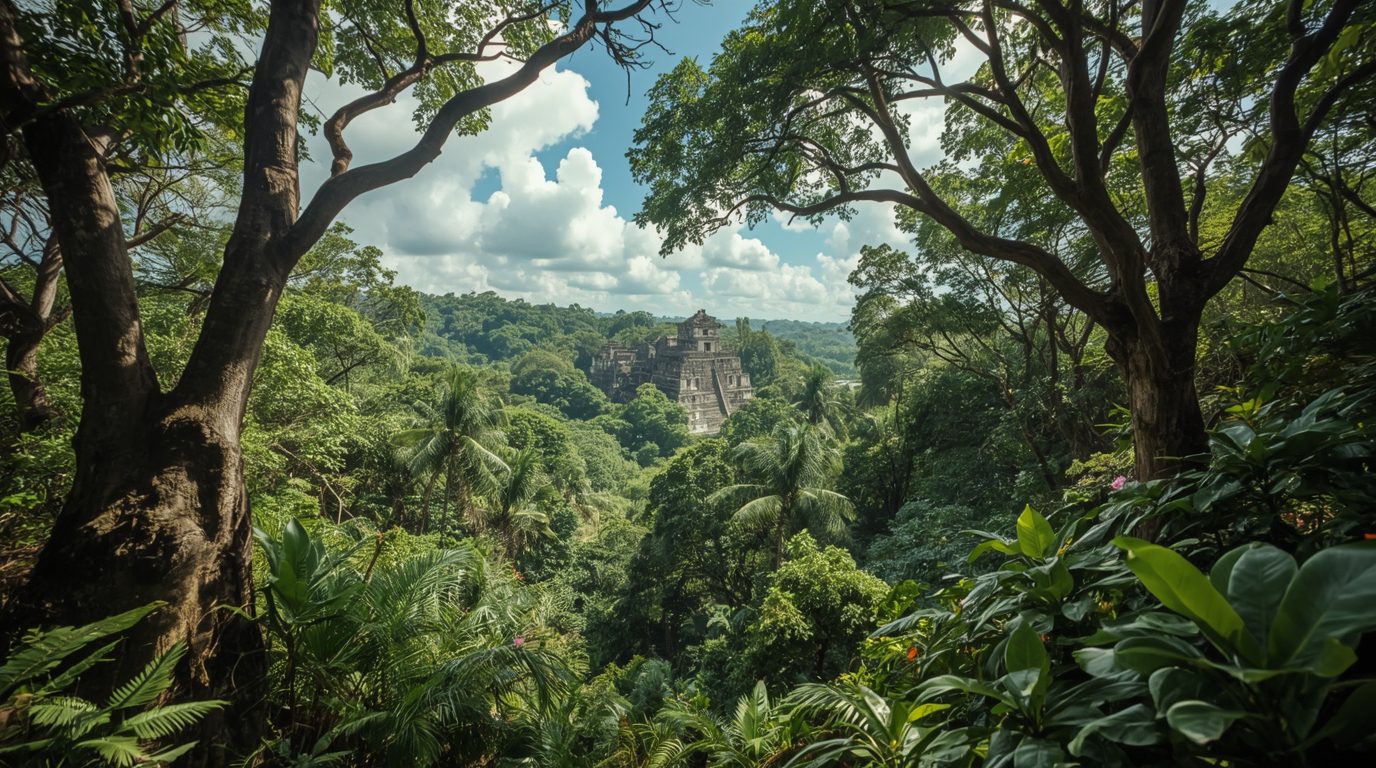Mexico, Guatemala, and Belize Launch Ambitious Great Mayan Jungle Reserve
GUATEMALA CITY (AP) — Mexico, Guatemala, and Belize have unveiled a bold plan to protect a vast tropical forest, linking more than 14 million acres (5.7 million hectares) across their borders. Named the Great Mayan Jungle Biocultural Corridor, the initiative aims to conserve one of the Americas’ most biodiverse regions while curbing illegal activity.
If successful, the reserve would become the second-largest in the Americas, after the Amazon, safeguarding unique species and crucial carbon sinks that help stabilize the global climate.
Security Concerns in the Reserve
The corridor spans southern Mexico, northern Guatemala, and northwestern Belize—areas long affected by organized crime. Drug cartels have built secret airstrips, smuggling networks operate across borders, and illegal logging continues for export.
Guatemala’s Minister of Environment, Patricia Orantes, stressed the need for strong state enforcement: “First, security forces need to come back because the region has been abandoned and given to organized crime. This isn’t just an environmental fight. The state of Guatemala has to reassert control over its territory.”
Mexico’s Alicia Bárcena added that forest protection requires national security forces, including the military. Officials note that stations alone won’t suffice, as local communities often rely on informal or illegal work, making them vulnerable to criminal influence.
Building Local Partnerships
Experts say the reserve’s success depends on engaging local communities as conservation partners. Juan Carlos Franco, a Mexican sustainability expert, explained: “Communities that manage the land with attention to culture and ecology can keep going even when crime is harsh. The key lesson is clear: when the right incentives are on the table, the people living there can be our best partners.”
Programs like Mexico’s Planting Life pay landholders to cultivate trees for fruit or timber. The $2 billion initiative could expand into the corridor to stabilize forests while providing livelihoods, though careful design is needed to avoid unintended consequences.
Conservation Through Biocultural Integration
Guarding the corridor requires blending security, Indigenous knowledge, and community practices. Indigenous councils and civil organizations guide decisions to respect local culture. Rafael Maldonado, a Guatemalan environmental advocate, noted: “The key will be to turn those who some say are linked to the drug trade into the strongest guardians of the park.”
Megaproject Dangers
Infrastructure projects like Mexico’s Mayan Train, a 950-mile (1,500 km) rail line, pose potential threats. While currently outside the protected zone, extensions could disrupt habitats. Guatemalan President Bernardo Arévalo has promised the reserve will remain off-limits to such projects, prioritizing tree canopy and ecosystem protection over immediate profits.
The three countries plan a joint council of environmental regulators and Indigenous leaders to review all new projects, ensuring forests are safeguarded alongside economic development.
Environmental Significance
The Great Mayan Jungle hosts hundreds of plant and animal species, many endangered or unique to the region. Tropical forests act as major carbon sinks, helping combat climate change. Protecting the corridor also preserves rivers, lakes, and soil, supporting local communities reliant on natural resources.
Funding and Implementation
The Great Mayan Jungle requires sustained funding and careful coordination. A working group will draft a detailed plan over the next four weeks, defining agency roles, community participation, and financing.
Initial funding is approximately $6 million, but long-term success depends on political will, international support, and active local engagement. Orantes emphasized the corridor must follow the “Mayan forest agenda”, prioritizing culture, ecology, and social well-being over profit.
Learning from the Region
Mexico’s Chiapas experience shows conservation programs fail if security and community needs conflict. Experts stress that local buy-in, education, fair jobs, and respect for Indigenous land titles are crucial. When communities are allies, they help patrol forests, detect illegal activity, and adopt sustainable farming methods.
Wider Regional Influence
The corridor demonstrates the benefits of cross-border environmental cooperation. By linking protected areas, it addresses ecological, social, and political stability. The initiative could also strengthen regional collaboration in conservation and crime prevention.
Challenges Ahead
- Crime and Security: Balancing law enforcement with community trust.
- Economic Pressures: Infrastructure, mining, and large-scale farming may threaten conservation.
- Community Buy-In: Real economic opportunities and Indigenous integration are essential.
- Funding: Sustained financing beyond the initial $6 million is needed.
- Monitoring and Enforcement: Cross-border surveillance and technology are required for effective oversight.
Optimism and Commitment
Officials remain cautiously hopeful. By integrating safety, conservation, and community involvement, the corridor aims to protect wildlife, honor culture, and support sustainable livelihoods. Bárcena emphasized that residents must be included in all efforts. Orantes reiterated the focus on the “Mayan forest agenda” to safeguard heritage and ecosystems for future generations.
The Great Mayan Jungle Biocultural Corridor represents one of the Americas’ boldest conservation initiatives. Stretching across Mexico, Guatemala, and Belize, it could preserve millions of acres of rainforest, protect wildlife, and limit organized crime. Its success relies on law enforcement, community engagement, cross-border cooperation, and a refusal to allow harmful economic projects—potentially setting a global standard for conservation that respects culture and meets economic needs.
Stay updated with reliable news:
Sports: Sport Flash HQ
Business: Biz Rush
Weather: The Climate Post
Travel: Neon Report
US Local: 24 Hour Bulletin
India Finance: The Lucky Ledger
General: The Chrono Post

